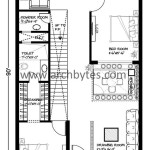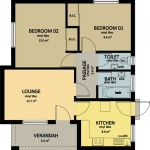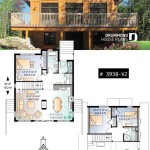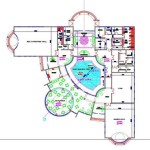Guinea Pig Cage Floor Plans
Choosing the right cage floor plan is crucial for guinea pig health and happiness. Guinea pigs are active, social animals that require ample space to roam, explore, and interact. A well-designed cage floor plan provides designated areas for various activities, promoting physical and mental well-being.
Several factors influence the ideal floor plan, including the number of guinea pigs, their age, and individual personalities. A cage housing multiple guinea pigs requires significantly more space than a cage for a single guinea pig. Younger, more energetic guinea pigs benefit from larger open areas for running and playing, while older guinea pigs may appreciate more designated rest areas.
The minimum recommended cage size for two guinea pigs is 7.5 square feet, but larger is always better. For each additional guinea pig, it's recommended to add an additional 2-3 square feet. While vertical space can be utilized with ramps and platforms, guinea pigs primarily utilize horizontal space, making floor space the priority.
Dividing the cage into zones caters to the various needs of guinea pigs. These zones can be created using cage dividers, fleece bedding arrangements, or strategically placed hides and tunnels. Key zones to consider include:
Sleeping Area: This area should provide a sense of security and comfort. Hides, fleece forests, or cuddle cups offer guinea pigs a safe space to rest and sleep undisturbed. Placing the sleeping area away from high-traffic zones, like near the food and water, can enhance their sense of security.
Eating Area: This zone should house food bowls, hay racks, and water bottles. Keeping the eating area separate from the sleeping and bathroom areas promotes hygiene and prevents contamination. A designated eating area also makes it easier to monitor food intake and ensure each guinea pig has access to food and water.
Bathroom Area: Guinea pigs tend to choose a specific corner or section of the cage for urination and defecation. Placing absorbent bedding, such as newspaper or disposable pads, in this area simplifies cleaning and minimizes odor. Regular spot cleaning of the bathroom area is essential for maintaining cage hygiene.
Play Area: This zone provides space for exercise and enrichment. Tunnels, chew toys, and interactive toys encourage exploration and play. Rotating toys regularly helps maintain novelty and prevent boredom. The play area can also include a designated area for floor time activities outside the cage, provided the area is safe and supervised.
Hay Area: Hay is a crucial component of a guinea pig's diet and should be readily available at all times. Providing a designated hay area, such as a hay rack or feeder, helps keep the hay clean and prevents it from being trampled or soiled. This area can be incorporated within the eating zone or in a separate, easily accessible location.
When designing the floor plan, consider the natural behaviors of guinea pigs. They enjoy exploring and hiding, so providing tunnels, hides, and other hiding places is essential. They also appreciate a variety of textures and levels, which can be achieved through ramps, platforms, and different types of bedding.
Avoid overcrowding the cage with too many accessories. While enrichment is important, overcrowding can restrict movement and create stress. Ensure adequate space remains for the guinea pigs to move freely between zones and interact with each other.
Regularly assess the cage layout and make adjustments as needed. Observe the guinea pigs' behavior and note how they utilize different areas of the cage. If certain areas are consistently underutilized or if the guinea pigs exhibit signs of stress, consider modifying the floor plan to better suit their needs.
Cleanliness is paramount for guinea pig health. Regardless of the floor plan, regular cage cleaning is essential. Spot cleaning should be performed daily, while a full cage cleaning, including replacing all bedding and disinfecting the cage, should be done weekly or as needed.
Ultimately, the best guinea pig cage floor plan is one that provides a safe, stimulating, and hygienic environment. By considering the individual needs of the guinea pigs and incorporating designated zones for various activities, owners can create a space that promotes their physical and mental well-being.
Different cage materials also influence floor plan considerations. Solid-bottom cages offer more stability for free-standing hideys and toys. Wire-bottom cages require careful consideration of flooring options to protect guinea pig feet. Fleece bedding or solid flooring inserts are often necessary to provide a comfortable and safe surface.
Planning the cage floor plan in advance can help ensure the creation of a comfortable and enriching environment. Sketching out the layout and considering the placement of different zones can be a helpful tool in the planning process. This also allows for visualization of traffic flow and ensures that the guinea pigs have ample space to move and explore their environment.

Cage Designs Plans Guinea Pig Cages

How To Build A Guinea Pig Hutch Buildeazy

How To Build A Guinea Pig Hutch Buildeazy

How To Build A Guinea Pig Hutch Buildeazy

Cage Which Design Should I Go With Guinea Pig Cages

How To Build A Guinea Pig Hutch Buildeazy

Craft Me Happy Building A Corner Diy C And Style Guinea Pig Cage With Perspex Front

147 Deluxe 2 Y Rabbit Hutch Cage With Under Run Buy Small Animal Supplies Casas Para Cobayas Mascotas Gallinas
Cage Designs Plans Guinea Pig Cages

Two Tier Rabbit Guinea Pig Hutch Plans Assembly Instructions Comes With Cut List And Step By Guide








